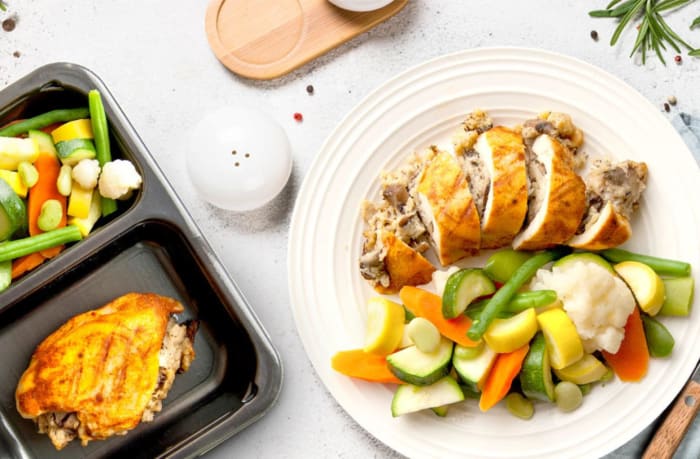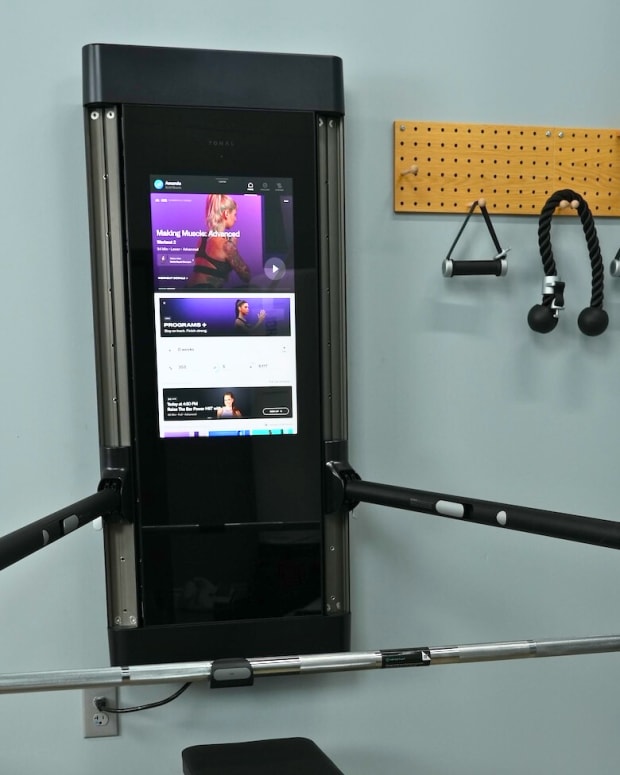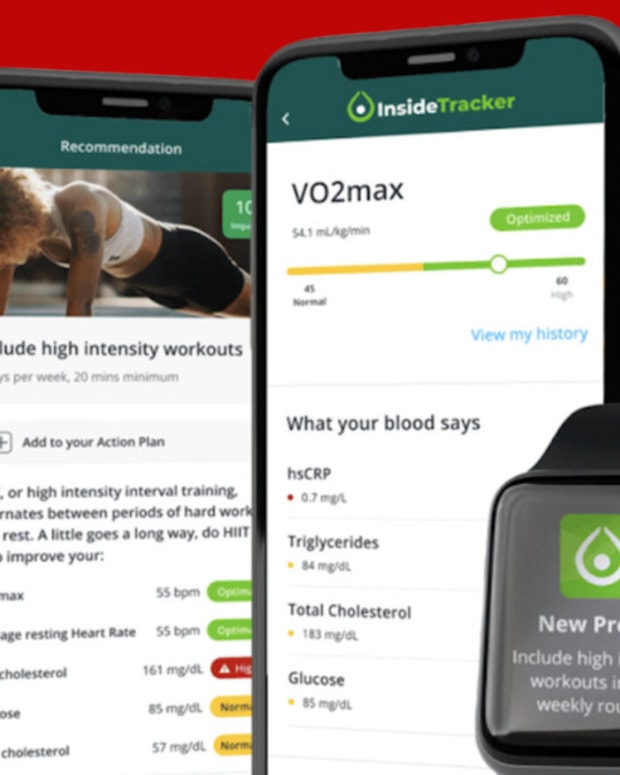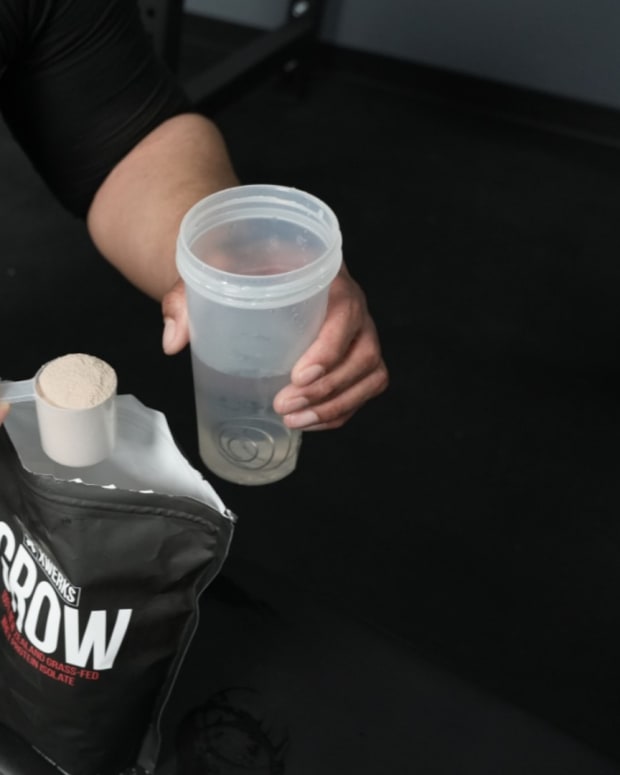The products featured in this article have been independently reviewed. When you buy something through the retail links on this page, we may earn commission at no cost to you, the reader. Sports Illustrated editorial staff are not involved in the creation of this content. Learn more here.
The advent of meal delivery services, like HelloFresh, Blue Apron and Sun Basket, has revolutionized the way we approach prepping and cooking healthy meals with fresh ingredients getting shipped right to our doorsteps on a set schedule. While some of these meal delivery services require preparing and cooking the meals yourself, others, like Diet-to-Go, provide low-calorie meals that only need to be reheated rather than having to cook a whole spread from scratch. Diet-to-Go makes healthy eating easier for busy people and can eliminate the time and energy required for meal planning, grocery shopping and preparing diet-friendly meals.
In this article, we provide a complete review of Diet-to-Go, including how it works, the pricing structure and how Diet-to-Go compares to the competition.
This content is meant to be informative, but should not be taken as medical advice. It is not intended for use as diagnosis, prevention or treatment of health problems. Always speak with your doctor before starting any new supplement or exercise regimen.
Diet-to-Go Key Info
- Offers allergen-friendly meals? No
- Offers specialty diet meals? Yes. Keto-friendly, vegetarian, diabetic-friendly, low carb and low-calorie meals offered
- Best for: Weight loss, diabetes, low carb diets and those who want healthy meals that don’t require cooking
- Number of meals: Plans include either five or seven days of meals per week, with the option of getting two or three meals per day
- Cost: Depends on meal plan and number of meals delivered per week. Prices range from $138.99 to $225.99 per week plus $19.98 for shipping each week
Pros
- Meal plans that cater to different diets such as vegetarian, keto and low carb
- Ability to substitute meals that don’t appeal to you
- Calorie-controlled meals with certain nutrient requirements created by registered dietitians, nutritionists and chefs
- Prepared, flash-frozen meals just require reheating but no cooking
- Free health coaching with a registered dietitian
- Hot and cold meal options for breakfast, lunch and dinner
- Ability to pause, cancel and change subscriptions
Cons
- Must order a minimum of two meals per day, five days per week
- There isn’t a ton of variability in the meals, so your diet may feel repetitive over time
- No allergy-friendly meals, gluten-free meals, kosher or vegan meals
What Is Diet-to-Go?
Diet-to-Go was founded back in 1991 by Hilton Davis, making it one of the first companies in the U.S. dedicated to delivering fresh, healthy meals. The company initially only served the Washington, D.C. metro area, but now delivers low-calorie meals nationwide. Diet-to-Go operates with the motto, “healthy eating made easy,” with the goal to help customers reach and maintain a healthy body weight. The company offers different weight loss meal plans geared towards different needs, including keto-friendly, vegetarian and diabetes-friendly meals.
All meals arrive prepared in a flash-frozen or chilled state, so all you have to do is reheat them. Some are even designed to be eaten cold. Customers are also eligible for free health coaching with a registered dietitian to learn more about nutrition, which can take place via phone or email. You can request this service through the Diet-to-Go dashboard via the Contact Form.
Note: Diet-to-Go focuses on weight loss, calorie budgeting, portion control and features other diet culture language in their calls to action like “get slim” and “start losing weight today.” Therefore, if language like this is triggering for you or if you have a history of an eating disorder or body dysmorphia, Diet-to-Go may not be a good fit for you.
How Does Diet-to-Go Work?
If you are interested in trying Diet-to-Go, the first step is to see if they deliver in your area. The company has kitchens in different locations and if your delivery address is located close to either of these sites, your meals will be delivered twice a week. However, if you reside further from one of the kitchens than would be workable to deliver fresh food in a timely manner, you will receive one shipment of all of your meals per week, and the shipment will include flash-frozen meals to ensure that they stay fresh.
After entering your delivery information, you will proceed to the plan builder page, where you will choose your Diet-to-Go meal plan. There are four plan options to choose from: Balance, Balance-Diabetic, Vegetarian and Keto-Carb30.
Depending on which meal plan you select, you will need to make additional choices as well. For example, with the Balance program, you’ll need to select your gender because the Women’s Balance Plan meals contain 1,200 calories per day and Men’s Balance Plan meals have 1,600 calories. If you choose either the Balance or Keto-Carb30 menu, you will need to indicate whether you want fish and seafood.
The next step is to choose the number of days per week you want to receive meals and the number of meals per day that you want to receive. You can choose to get either five or seven days of meals per week and either two or three meals per day.
After deciding your meal frequency, you check out and enter your payment information. You can then view your Diet-to-Go dashboard, where you are able to see your upcoming meals and make substitutes for meals that do not align with your preferences. You can even choose to nix meal suggestions you’re not into altogether so that it doesn’t continue to appear in your menu.
With some of the other premium food delivery services, meals arrive with a full-color guide with nutritional information, recipes and a listing of all of your included meals. Because Diet-to-Go is ready-made foods that just need to be reheated, the need for recipes and extra information is minimal. With that said, the meals come with just very basic labeling taped to the front of each individually-sealed meal tray. The label lists the name of the meal, the nutrition facts and an ingredient list. The only other thing that comes in the box (besides the packaging) is the packing slip, which includes the instructions for how to reheat the meals.
However, customers do receive an email with additional materials about the meals, how to reheat them and suggested snacks that align with your meal plan after you place your order and have selected your menu for the week.
Diet-to-Go Meal Plans
Although there are four different Diet-to-Go meal plans, all of them are designed to be low calorie. How they differ is in the macronutrient ratios (carbohydrates, protein and fat) they offer. The Balance and Vegetarian plans both provide the balance of carbohydrates, protein and fat that are within daily nutritional goal ranges recommended by the Dietary Guidelines for Americans (DGA). If you struggle to eat the ideal amount of macronutrients each day, you can try adding a protein powder into your diet.
The Keto-Carb30 is a high-fat, low-carbohydrate menu plan that is similar to other keto diets or low carb diets and the Balance-Diabetic plan provides the recommended protein and fat percentages and fewer net carbs for those who need to regulate their blood sugar levels.
One important thing to know is that the basic labeling that comes on the Diet-to-Go meal packaging includes nutritional facts, but the nutritional panel labels are not up to date with the Food and Drug Administration’s new labeling standards for added sugars, nor do the food labels contain any information about allergens.
Furthermore, Diet-to-Go does not cater to some common dietary needs. For example, there are no vegan, kosher or gluten-free meal options, and because the food labels do not include allergy information, this is not among the most allergy-friendly diet food delivery services. The company also does not disclose where they source their ingredients.
Related: The Best Supplements for Weight Loss
In addition to providing calorie-controlled meals targeted towards different macronutrient needs to support weight loss, the primary benefit of Diet-to-Go versus many other meal delivery services is that it provides heat-and-eat meals so no cooking or prep is required. There are even cold options that don’t require any heating. The heat-and-eat meals can be reheated in the oven, microwave or toaster oven. The company recommends reheating sandwiches, wraps and any meals with cheese in the toaster oven. Most meals can be reheated in a conventional oven in 20-30 minutes or in the microwave for two to three minutes. Customer reviews note that meals seem to heat up well and cook evenly, without needing additional time.
Diet-to-Go Meal Options
The Diet-to-Go Meals are all low-calorie, but represent recipes from a variety of cuisines including American, Greek, Indian, Italian, Japanese, Mexican, Middle Eastern and fusion. The meal plans and recipes are designed by registered dietitians in collaboration with chefs in order to ensure that they are nutritious, balanced, calorie-controlled and in line with the dietary needs of the meal plan (keto, vegetarian, etc.) yet still taste good.
Almost all of the Diet-to-Go meals are considered “heat-and-eat” meaning that they are already prepared for you and you just need to reheat them from their flash-frozen or refrigerated state. However, there are also cold menu options that do not need to be reheated. Examples include simple options like peanut butter and jelly sandwiches, Greek salad, whole wheat bagel with date cream cheese and Waldorf chicken salad.
The Diet-to-Go menus are automatically generated for each meal plan, but customers have the option to make substitutions if any of the populated meals that are set to deliver do not appeal to you. The menu options of weekly meals change from week to week within a five-week cycle, meaning that from one week to the next, your menu will rotate, but every five weeks, the cycle will begin again and see the same meals reappear in your menu.
Additionally, although the recommended meals change on a weekly basis, the substitutions that you can choose from remain the same. There are approximately 20 possible substitutions for both the lunch meal and dinner meal on the Balance plan and about 25 alternates for breakfast. This plan offers the greatest variety and latitude in the possible substitutions. The Balance-D plan offers about 12 alternates each for lunch and dinner and 10 breakfast substitutions. The Keto-Carb30 menu has about 17 substitutions for lunch and the same number for dinner, and about 11 possible alternatives you can select for breakfast. Finally, the Vegetarian plan has nearly as many substitutions as the Balance menus, with 25 breakfast options, 20 lunch substitutions and 17 dinner alternatives. Unlike many meal delivery services, Diet-to-Go does not offer the option for add-ons, but this is mainly due to the fact that the meal plans are specifically designed by registered dietitians to be calorie-controlled, and adding on extra snacks, desserts or supplemental sides to meals would affect calorie count. With that said, some of the meals do include a dessert, but the calories for the dessert are already accounted for in the diet plan.
If you do want to make substitutions to your menu, the deadline to do so is on Fridays the week before the scheduled delivery. If you do not live near one of the company’s two kitchens and will be receiving a once-weekly box with flash-frozen meals, you will receive tracking information and a delivery date. If you live close to one of the company’s two kitchens and will be receiving two weekly boxes with refrigerated meals, you will not receive tracking information.
If you are going to be out of town or unable to receive one of your deliveries, you are able to place your account on hold by contacting customer service via your Diet-to-Go dashboard.
Examples of meals that you may find on some of the Diet-to-Go menus include a chicken black bean wrap, Asian meatballs, savory morning muffins, scrambled eggs ranchero, herb-baked salmon, turkey Salisbury steak, Waldorf chicken salad and a chicken Florentine burger.
Diet-to-Go vs Competitors
Diet-to-Go does not provide WW meals using WW points like some weight loss meal delivery services, but it is similar to several other portion-controlled, prepared meal services.
Diet-to-Go vs Nutrisystem
Diet-to-Go is similar to Nutrisystem in that both companies provide low-calorie, ready-to-heat meals with several different menu plan options geared towards different dietary goals. Menus are designed by nutritionists. In general, Nutrisystem meals cost less per meal and the menu plans include snacks whereas the Diet-to-Go menu plans do not have snacks. Nutrisystem is also slightly more customizable in terms of how many calories you eat per day. The packaging and meal selection is fairly similar across both companies, with the option of diabetes-friendly and vegetarian diet menu plans with both meal delivery services, although Nutrisystem has more sweets, dessert options and protein powder shakes for weight loss. Nutrisystem also offers a weight maintenance menu plan for those who have already achieved their healthy weight.
Diet-to-Go vs Jenny Craig
Like Diet-to-Go, Jenny Craig calorie-controlled prepared meals delivered to your home geared towards those seeking to lose weight. However, the cost per meal is higher and there are fewer options for specific dietary goals. For example, although there are vegetarian options, there is no specific vegetarian meal plan. Additionally, portions are extremely small and contain only 250 to 350 calories per “meal,” but the diet plans typically involve eating six times per day rather than the three meals with Diet-to-Go.
Both companies use registered dietitians to help create nutritious, balanced recipes that are low-fat, low-cholesterol, low-sodium, low-calorie and meet certain other nutritional requirements where noted, such as being low in carbohydrates for diabetic-friendly meals.
Diet-to-Go Costs and Subscription
The price for Diet-to-Go plans is based on the meal plan and the number of meals you get per week. All plans include a shipping cost of $19.98 per week.
Women’s Balance Plan, Balance-Diabetic Plan and Vegetarian prices
These plans cost $138.99 per week for five meals per week with two meals per day and $162.99 per week for five meals per week with three meals per day. The prices increase to $185.59 and $203.99 per week for seven meals per week with two and three meals per day, respectively.
Men’s Balance Plan prices
Because the Men’s Diet-to-Go Balance plan has a higher calorie count than the women’s, the plan price is higher. The five-day plan with two meals per day is $147.59 per week and three meals per day costs $172.99 per week. The seven-day meal plan prices jump to $198.99 and $225.99 per week.
Keto-Carb30 prices
The Keto-Carb30 plan is the most expensive. The plans for meals five days per week cost $151.99 per week for two meals per day and $179.99 per week for three meals, while the plans for meals seven days per week cost $206.59 for two meals per day and $225.99 per week.
Subscription auto-renews every week, but you can pause your keto meal delivery if you are going on vacation or have some other conflict. You can also cancel your subscription at any time by contacting customer service via phone or email.
Is Diet-to-Go Right for You?
Diet-to-Go can be a great option for people trying to lose weight who have limited time, knowledge, expertise, energy or interest in meal planning, grocery shopping, preparing and cooking healthy foods. Diet-to-Go caters to those who need portion-controlled, calorie-controlled meals that align with certain macronutrient ratios or nutritional profiles. Because you have the option to order up to seven days of meals per week and 2 to 3 meals per day, you can theoretically get all of your meals from Diet-to-Go, negating the need to do any type of grocery shopping or keep other food in your house. For those who are short on time or tend to over eat if they keep certain foods in the house or cook for themselves, Diet-to-Go can be a structured and convenient way to remove triggers for overheating and provide the healthy food you need to support your weight loss goals.
Related: The Best Weight Loss Apps
Diet-to-Go Is not a good meal delivery option for anyone who is not trying to lose weight, as the calorie count for the meals is quite low and the portion sizes are quite small, meaning that you might not be able to support your caloric needs with these meals unless you are trying to create a significant caloric deficit for weight loss. In this vein, if you do not like to be surrounded by diet culture messaging about losing weight, having a “calorie budget“, limiting snacks and controlling portions, the Diet-to-Go website may be triggering or unhealthy for you.
Additionally, if you have food allergies or specific dietary needs such as vegan, Kosher or gluten-free food, Diet-to-Go is unable to cater to your needs.
Diet-to-Go Customer Reviews
Many customers love the convenience and variety of meals offered on the different menus. Having the option to swap out recommended meals and the ability to cater meal plans to specific wellness goals are other cited pros of Diet-to-Go.
However, one of the common complaints noted in some Diet-to-Go customer reviews is the excessive packaging used for each meal and with the delivery box overall. Each meal tray comes individually sealed, but it is packed in its own large cooler bag that is inside its own cardboard box. There is a lot of plastic packaging with each meal tray, including plastic wrap around certain foods and plastic condiment cups inside the tray. Within the delivery box, there are gel ice packs with refrigerated boxes and dry ice packs with flash-frozen meals, lots of bubble wrap, cardboard dividers and large plastic air pouches. Much of the packaging is not recyclable, resulting in a significant amount of trash.
Some reviews also note that the meals, specifically basics like vegetable sides, were lacking in flavor. Other customer reviews noted that even using the toaster oven to reheat sandwiches sometimes causes thinner breads like pita to become soggy, depending on the ingredients inside the sandwich.
Related: The Best Weight Loss Programs for Women
Diet-to-Go FAQs
How many calories are in a Diet-to-Go meal?
The number of calories per meal depends on the meal plan. The Diet-to-Go Balance menu provides 1,200 calories per day for women and 1,600 calories per day for men. The Keto-Carb30 plan provides 1,300 calories per day with no option to have a higher or lower calorie count based on your sex. This plan provides a daily maximum carb intake of about 30 grams.
Are Diet-to-Go meals frozen?
Depending on where you are located, your Diet-to-Go meals will arrive flash-frozen or chilled with ice packs.
Does Diet-to-Go offer vegetarian and vegan meal options?
Diet-to-Go has a vegetarian meal plan but no vegan meal plan or meal substitutions that are specifically marked as vegan.
Does Diet-to-Go offer meals I can cook myself?
No. Diet-to-Go is a meal delivery service with prepared meals. The healthy meals come either as a heat-and-eat version that you reheat in a conventional oven, toaster oven or microwave, or as a cold meal that does not require reheating. The meals do not require cooking.
Final Thoughts
Overall, because Diet-to-Go offers a variety of meals that fit into various dietary plans, it can be a good meal delivery option for dieters who have limited time to prepare foods and want to maximize convenience, portion control and low-calorie dishes over potentially more flavorful and diverse meals. With options that are keto-friendly, diabetic-friendly and vegetarian, Diet-to-Go can be a good weight loss meal plan for dieters with certain dietary needs who are working towards reaching a healthy weight.
Prices are accurate and items in stock as of publish time.










